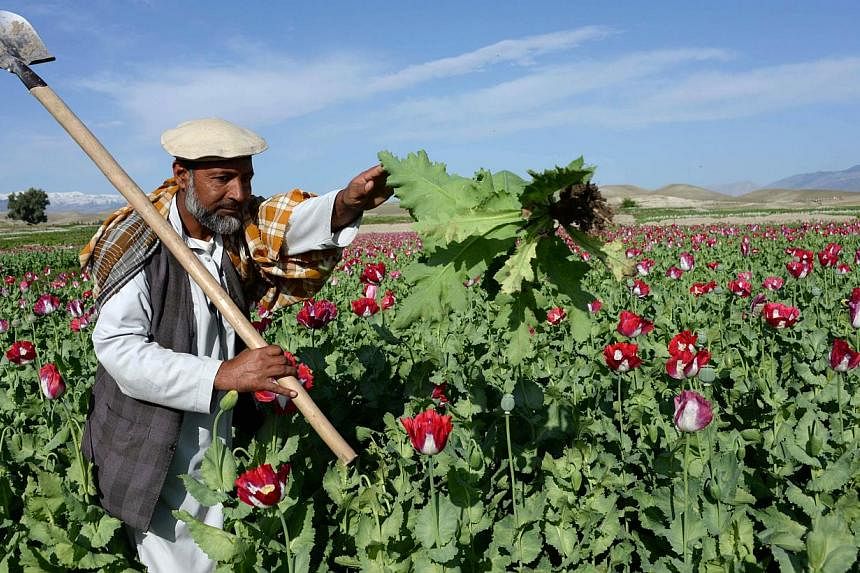KABUL (AFP) - Opium poppy cultivation in Afghanistan reached a record high in 2014, a United Nations report revealed on Wednesday, highlighting the failure of the multibillion-dollar United States-led campaign to crack down on the lucrative crop.
The total area under poppy cultivation was about 224,000ha in 2014, a 7 per cent increase on last year, according to the annual Afghanistan Opium Survey released by the United Nations Office on Drugs and Crime (UNODC).
Just 74,000ha was being used to grow poppies in 2002, a year after the Taleban regime was toppled.
Despite a decade of costly US and international counter-narcotics programmes, poppy farming has boomed in the south and west regions, which include the most volatile parts of the country where the Taleban insurgency is strongest.
With US-led Nato troops withdrawing from Afghanistan, fears are rising that worsening instability could trigger further growth in opium cultivation as Afghan security forces struggle to push back the resurgent Taleban.
"The country is having to stand on its own feet (and)... will have to deal with this criminalisation of its economics and politics as a matter of priority," Mr Jean-Luc Lemahieu, director of policy analysis at UNODC, said.
Poppy farmers are often taxed by the Taleban, who use the cash to help fund their insurgency against government and Nato forces.
Despite the presence of tens of thousands of foreign troops since a US-led invasion ousted the Taleban, Afghanistan produces about 80 per cent of the world's opium, which is used to produce highly addictive heroin.
The survey said that potential opium production was estimated at 6,400 tonnes in 2014, a rapid increase of 17 per cent from 2013, but not as high as the record 7,400 tonnes produced in 2007.
"In 2014, opium prices decreased in all regions of Afghanistan. One probable reason for the decrease was an increase in supply due to an increase in production," the survey said.
It said that the "farm-gate" value of opium in Afghanistan was about US$0.85 billion - 4 percent of the country's gross domestic product.
Eradication of poppy fields fell by 63 per cent in 2014 to just 2,692ha.
Earlier this year the US Special Inspector-General for Afghanistan Reconstruction John Sopko said the country could turn into "a narco-criminal state" after the bulk of the Nato-led force withdraws.
About 12,500 Nato troops will remain into 2015, but the force's 13-year combat mission against the Taleban will finish at the end of this year.
The poppies, which provide huge profits in one of the world's poorest countries, play a large part in the corruption that plagues Afghan life at every level.
President Ashraf Ghani, who came to power in September, has vowed to tackle corruption as he seeks to steer his strife-torn and impoverished country into a new era after the rule of Mr Hamid Karzai, president since 2001.
"Action against high-level traffickers is required to create a level of deterrence and a sufficient risk level," said Mr Lemahieu.
Heroin addiction levels in Afghanistan have also risen sharply - from almost nothing under the 1996-2001 Taleban regime, to more than one million heroin addicts today, according to United Nations figures.

